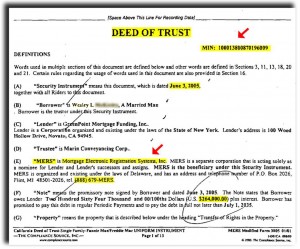A transfer on death deed: What a difference a day makes.
UNIONTOWN, OH–Charles Morris was dying.
Diagnosed with colon cancer in 2004, his condition worsened until, in the summer of 2006, the end was near.
So Charles sat with a lawyer to draw up a will. He wanted his house and two cats to go to his ex-wife, Michelle;
his computer and camera equipment to Thomas Hall; and the remainder of his possessions to his nephew, Joseph Mattia.
Because gifts made by a will must go through probate, which could tie up the real property for months, the lawyer suggested Charles sign a transfer on death deed, so that upon his death the house would immediately pass to Michelle outside of probate, without court supervision.
The transfer on death (“TOD”) deed is new. It’s an alternative to the trust, or joint tenancy with right of survivorship, as a means to transfer a decedent’s real property without necessity of probate. Ohio’s statute approving the TOD form became effective in 2002.
On August 25, 2006, Charles executed his Last Will and Testament, along with a TOD deed naming Michelle as the transfer on death beneficiary. It appears the TOD was left with the lawyer for recording.
Days later, on August 30, Charles died. The next day, August 31, the TOD was recorded with the Recorder Division of the Summit County Fiscal Office.
Soon Charles’ will was filed in court and admitted to probate. Thomas Hall was appointed executor of the estate.
As instructed by the lawyer, Michelle recorded an affidavit of transfer on death, stating she was the sole surviving beneficiary under the TOD, along with a certified copy of Charles’ death certificate.
Then things got contentious.
Joseph Mattia, the nephew entitled to the remainder (“residue”) of the estate under Charles’ will, filed suit for a judgment that the TOD was invalid, because the deed was not recorded while Charles was living. Such a judgment would cause the house to be included in the probate proceedings where, as part of the “residue” of the estate, it could be inherited by Joseph. This leaves Michelle with just the two cats.
Joseph argued for a literal reading of the Ohio statute (Revised Code section 5302.22). The statute says that a TOD deed must be executed and recorded for the beneficiary to have rights to the property. So, the argument goes, a deed recorded after the grantor’s death is ineffective.
Michelle countered that the statute should not be so narrowly construed. She pointed out a grantee can’t control when a deed, filed for record, will be officially “recorded.” She also invoked the familiar rule that a deed is effective, as between the grantor and grantee, when it is executed and delivered (i.e., entrusted to a third party for recording).
The trial court ruled in favor of Joseph, and the decision was upheld by the Court of Appeals.
The courts relied on language of the statute, which states that a property owner “may create an interest in the real property transferable on death by executing and recording a deed as provided in this section….” Citing an earlier Ohio case in which the literal interpretation was followed, the appeals court reasoned that a TOD deed may be later revoked by a grantor, so the recording requirement protects the grantor’s true “last wishes.”
Moral: As of this writing, the TOD deed has been approved by legislatures in more than a dozen states and is under review in the rest. It may become commonplace. As with anything new, there may be pitfalls. When relying on the TOD deed you should get legal advice, follow your state statute, and be mindful of local recording practices.
Such is the power of wishes.
The (unpublished) case is reported as Mattia v. Hall, 2008 WL 186650 (Ohio App. 9 Dist.)







